How old batteries will help power tomorrow’s EVs
Battery recycling is one of MIT Technology Review's 10 Breakthrough Technologies of 2023. Explore the rest of the list here.
To Redwood Materials, the rows of cardboard boxes in its gravel parking lot represent both the past and the future of electric vehicles. The makeshift storage space stretches for over 10 acres at Redwood's new battery recycling site just outside Reno, Nevada. Most of the boxes are about the size of a washing machine and are wrapped in white plastic. But some lie open, revealing their contents: wirelesss keyboards, discarded toys, chunks of used Honda Civic batteries.
Far from trash, the battery materials in all these discarded items are a prize-the metals are valuable ingredients that could be critical to meeting exploding demand for electric vehicles.
Redwood Materials is one of a growing number of recycling companies working to provide an alternative to the landfill for lithium-ion batteries used in electronics and EVs. The company announced its plans for this $3.5 billion plant in Reno in mid-2022. The facility is expected to produce material for 1 million lithium-ion EV batteries by 2025, ramping up to 5 million by 2030. Redwood plans to start construction on an additional facility in the eastern US in 2023.
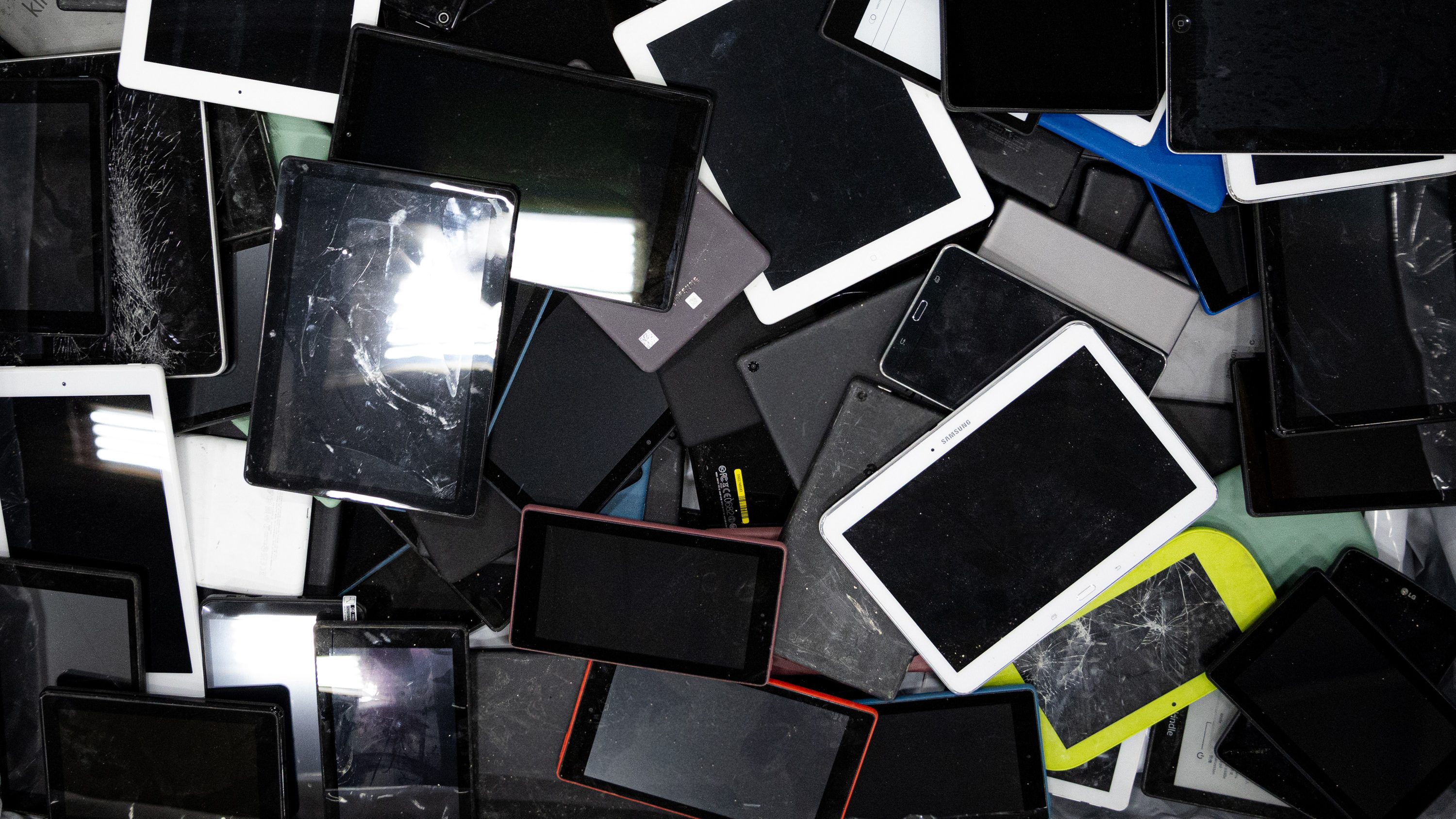 Redwood runs a collection program for old phones, tablets, and other devices that use lithium-ion batteries.REDWOOD MATERIALS
Redwood runs a collection program for old phones, tablets, and other devices that use lithium-ion batteries.REDWOOD MATERIALSMeanwhile, the Canadian firm Li-Cycle currently operates four commercial facilities that can together recycle about 30,000 metric tons of batteries annually, with an additional three sites planned. Other US-based startups, like American Battery Technology Company, have also announced large commercial tests, joining an established recycling market in China and Europe.
While these new recycling ventures are better for the environment than burying metals in landfills, they're also spurred by a booming market for electric vehicles. EV adoption is exploding in the US and around the world, bringing new demand for the metals that go into their batteries, especially lithium, nickel, and cobalt. EVs are expected to account for 13% of new vehicle sales in 2022, a number that's expected to climb to about 30% by 2030. Supplying all those cars with batteries will require far more metals than are currently available.
More than 200 new mines could be needed by 2035 to provide enough material for just the cobalt, lithium, and nickel needed for EV batteries. Lithium production will need to grow by 20 times to meet demand for EVs by 2050.
Recycling could represent a major new source of raw materials. Globally, there was over 600,000 metric tons of recyclable lithium-ion batteries and related manufacturing scrap in 2021. That number is expected to top 1.6 million metric tons by 2030, according to the consulting firm Circular Energy Storage. And it could really take off after that, as the first generation of electric cars heads for the junkyards.
New advances in the recycling process for lithium-ion batteries are transforming the industry, allowing recyclers to separate and recover enough of these valuable metals to make the process economical. Recycling can't address material shortages alone, because demand for the metals outstrips the amount circulating in batteries used today. But thanks to these advances, it could account for a significant fraction of supply in the coming decades.
When I visited in September, Redwood was preparing to ship its first product, a small sample of copper foil used in battery anodes. It's sending the foil to the battery maker Panasonic to use in the Nevada Gigafactory, which produces battery cells for Tesla vehicles less than five miles away.
On the way to Redwood's factory, I saw tumbleweeds leap across the highway, and some of the area's wild horses idled on a hillside. Later, I'd spot a coyote skittering across the parking lot.
But down the dirt road at the site, the Old West vibes quickly fell away, replaced by a sense of urgency radiating from nearly everyone there. Several massive buildings were under construction, and engineers and construction workers in safety vests and hard hats hurried around the site, ducking between temporary trailers serving as makeshift offices, labs, and meeting rooms.
When construction is finished, the Redwood site will produce two major products: the copper foil for anodes and a mixture of lithium, nickel, and cobalt known as cathode active material. These components account for over half the cost of battery cells. By 2025, Redwood projects, its facility will produce enough of them to make batteries for more than a million EVs every year.
Down the hill from the trailers, the building for copper foil production was the furthest along, with a roof and walls; a machine for making the foil was tucked away in the corner. But the two other major buildings still looked far from completion-one was missing walls, and the other was only a foundation.
Redwood has big plans and plenty of construction ahead.
A sense of paranoia"Redwood Materials was founded by JB Straubel, who as Tesla's chief technical officer during the early 2010s led many of the company's battery breakthroughs, including the beginnings of its network of charging stations. But even as Tesla was transforming the way electric cars were manufactured and sold, Straubel was worried about how overwhelming the need for more battery materials would become. He began to think of ways to lower the cost of batteries and help reduce the carbon emissions associated with making them.
Straubel started Redwood while still working at Tesla (he left in 2019); he wanted, as he puts it, to create a sustainable battery materials company. These days he talks about his mission with a breathless excitement coupled with the precision of an engineer, sometimes pausing in the middle of a thought to start over as he explains his vision for the future of battery production.
It simply can't work unless you have a closed loop for the raw materials," he says. There aren't enough new raw materials to keep building and throwing them away."
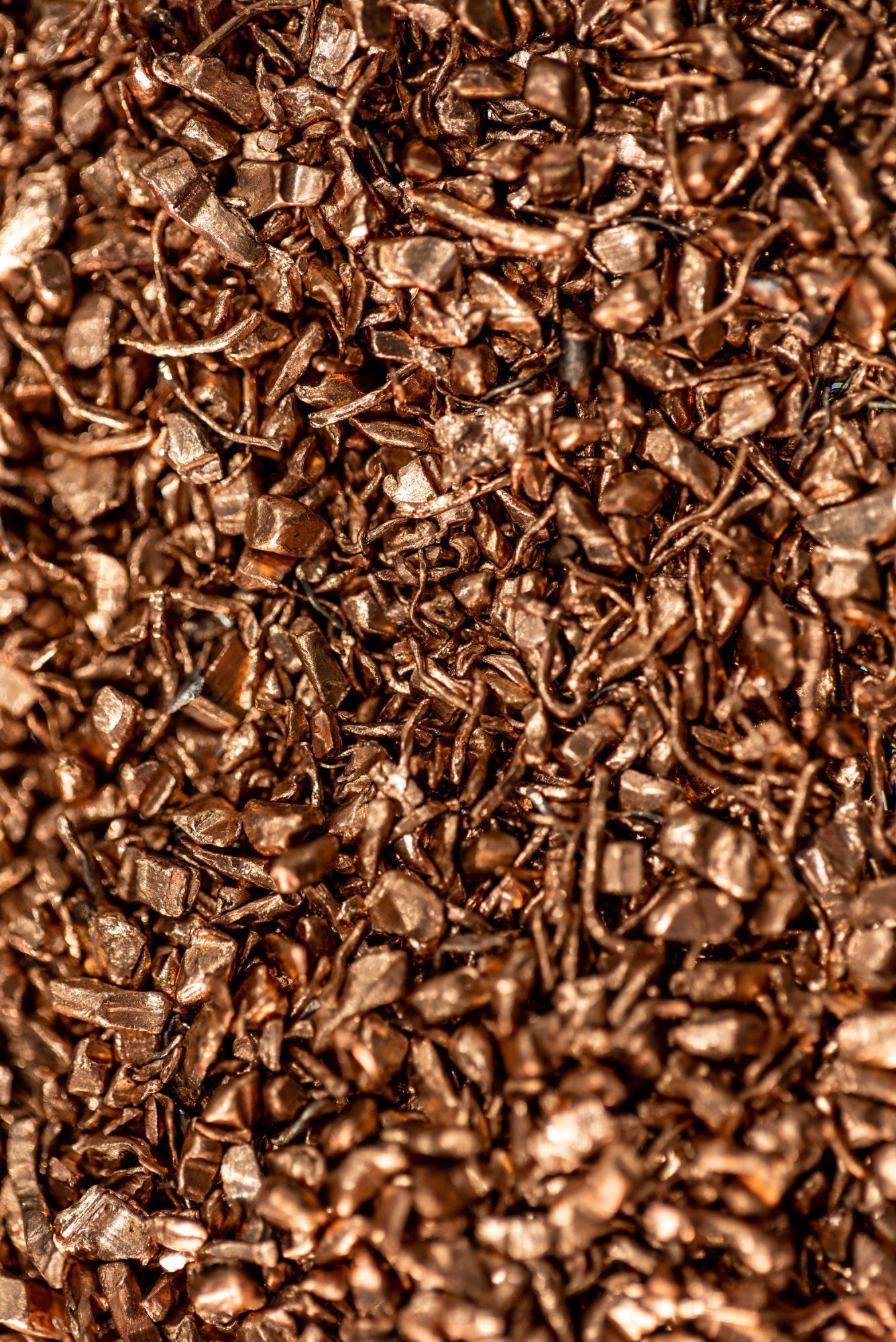
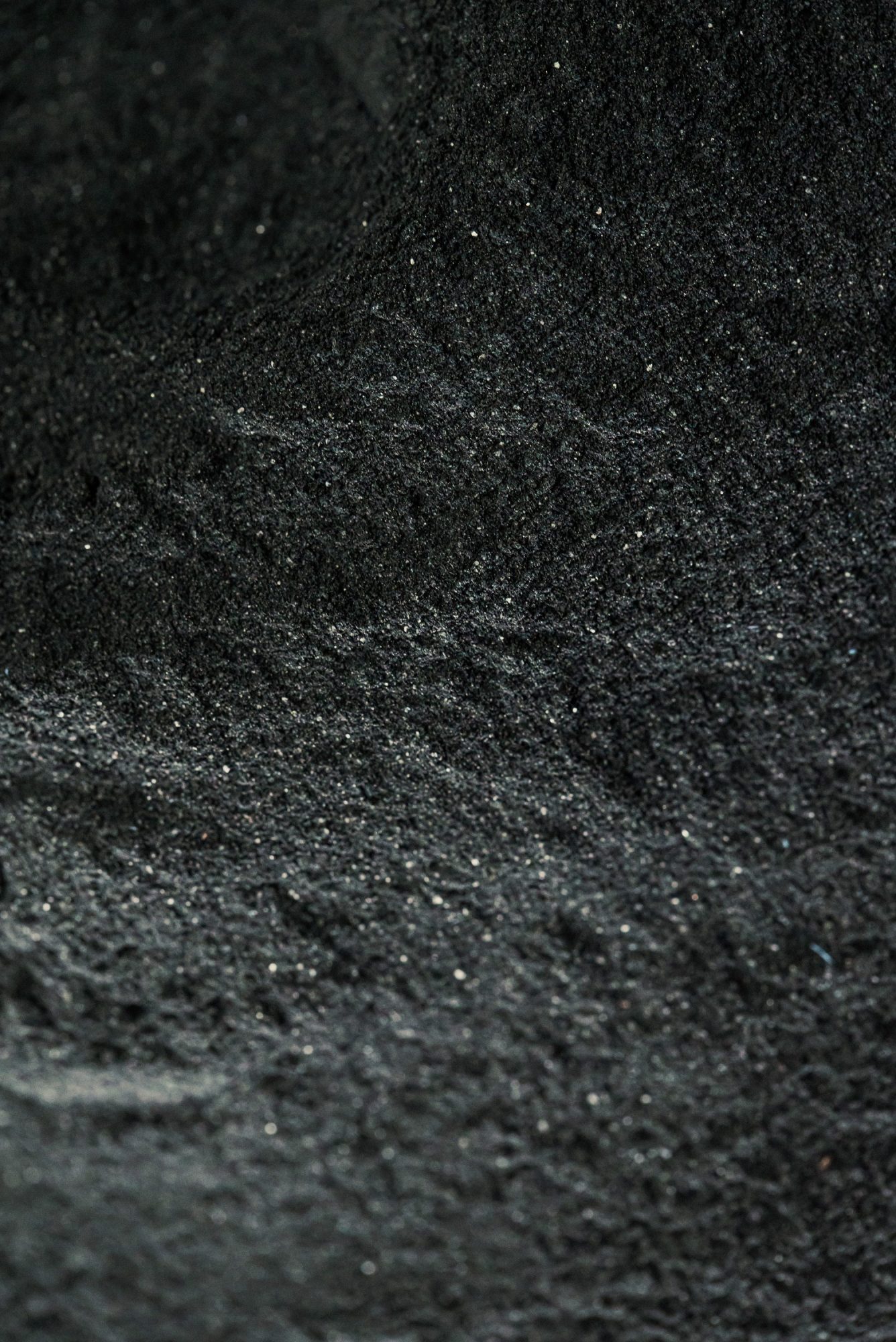
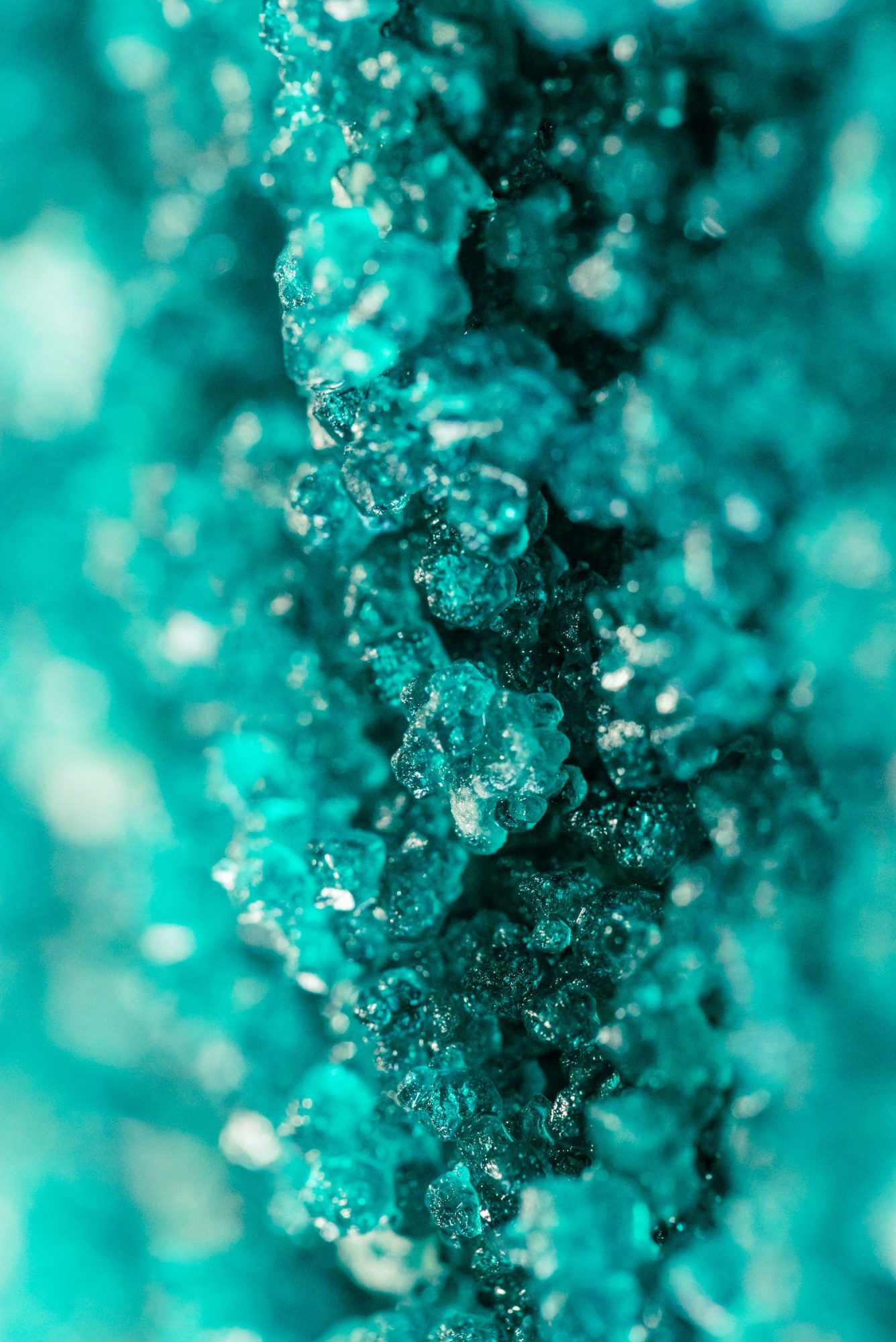
Redwood uses a process called hydrometallurgy to recover valuable metals such as cobalt, lithium, and nickel from the batteries it collects.
Creating a closed loop of materials, where old batteries become feedstock for new ones, sounds like an obvious idea, but executing it isn't trivial. It's not just a sorting or a garbage management problem," Straubel says.
Chemically separating the crucial metals locked in batteries is an intricate task. Labs, startups, and established companies alike are all searching for the ideal process to recover the highest possible amounts of valuable materials in the purest possible form.
The details of how Redwood solves this problem are closely held-they're the company's secret sauce. But its process is also very much a work in progress, and the urgency of figuring it out is clear.
I do have this kind of sense of paranoia and urgency and almost-not exactly-panic, that's not helpful. It really derives from a deep feeling that I don't believe we're appropriately internalizing how bad climate change is going to be," Straubel says.
I generally don't think we're going fast enough. I don't think anyone is."
Recycling's roleMost recycling facilities for lithium-ion batteries use a set of chemical processes called hydrometallurgy, where materials in the batteries are dissolved and separated using a range of acids and solvents. In addition to nickel, cobalt, and other materials like graphite and copper, recent developments have allowed hydrometallurgy to recover lithium at high rates as well.
After some additional processing, recovered materials can then be used in new products. Whereas some materials, such as plastics, can degrade over time with recycling, researchers have found that metals recovered from batteries work just as well as mined ones for charging and storing power.
Many batteries arriving at Redwood need to be disassembled by hand before processing. This is the case for batteries coming in full EV battery packs, which are the size of a mattress and too large for Redwood's equipment, as well as batteries still attached to their products, like laptops or power tools. All these battery types generally contain lithium, nickel, and cobalt, though the relative amounts vary; batteries in consumer electronic devices, for example, tend to be more cobalt-heavy than those in EVs.
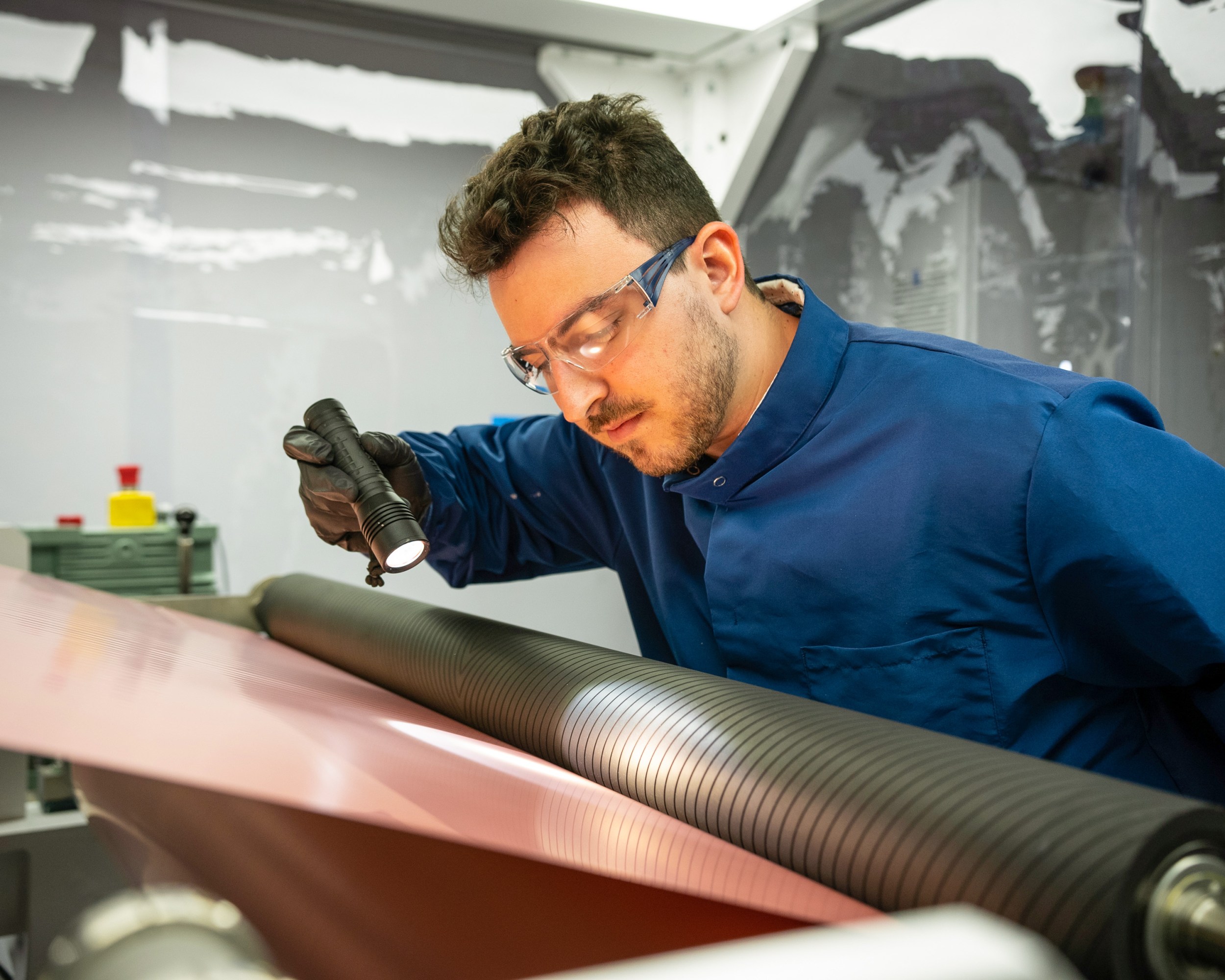 One of Redwood's first products is copper foil, which is used in lithium battery anodes. Here a Redwood technician inspects the product as it rolls off the manufacturing line.
One of Redwood's first products is copper foil, which is used in lithium battery anodes. Here a Redwood technician inspects the product as it rolls off the manufacturing line.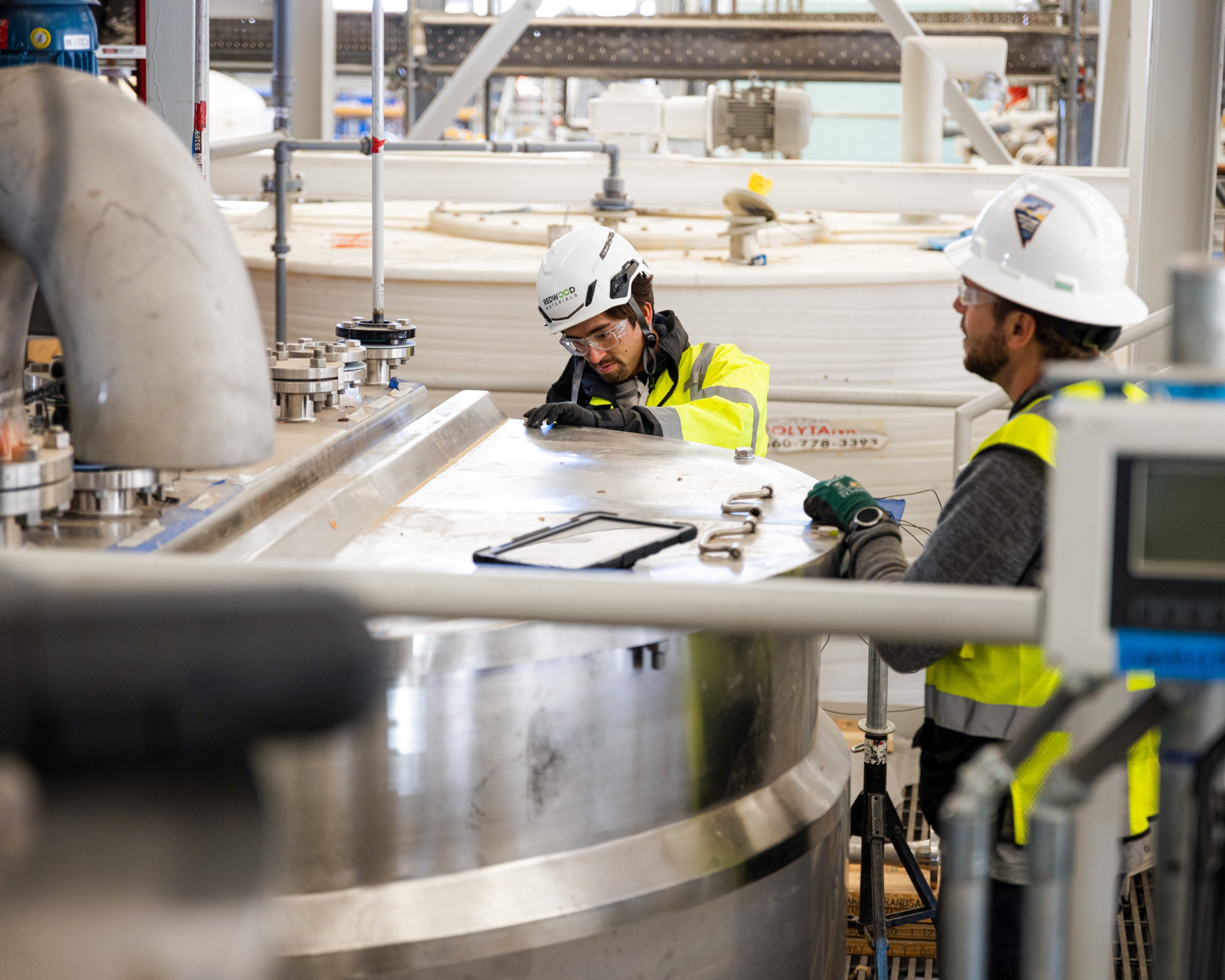 Redwood plans to produce copper foil at its new campus outside Reno, Nevada. Delivery to Panasonic was planned for December.
Redwood plans to produce copper foil at its new campus outside Reno, Nevada. Delivery to Panasonic was planned for December.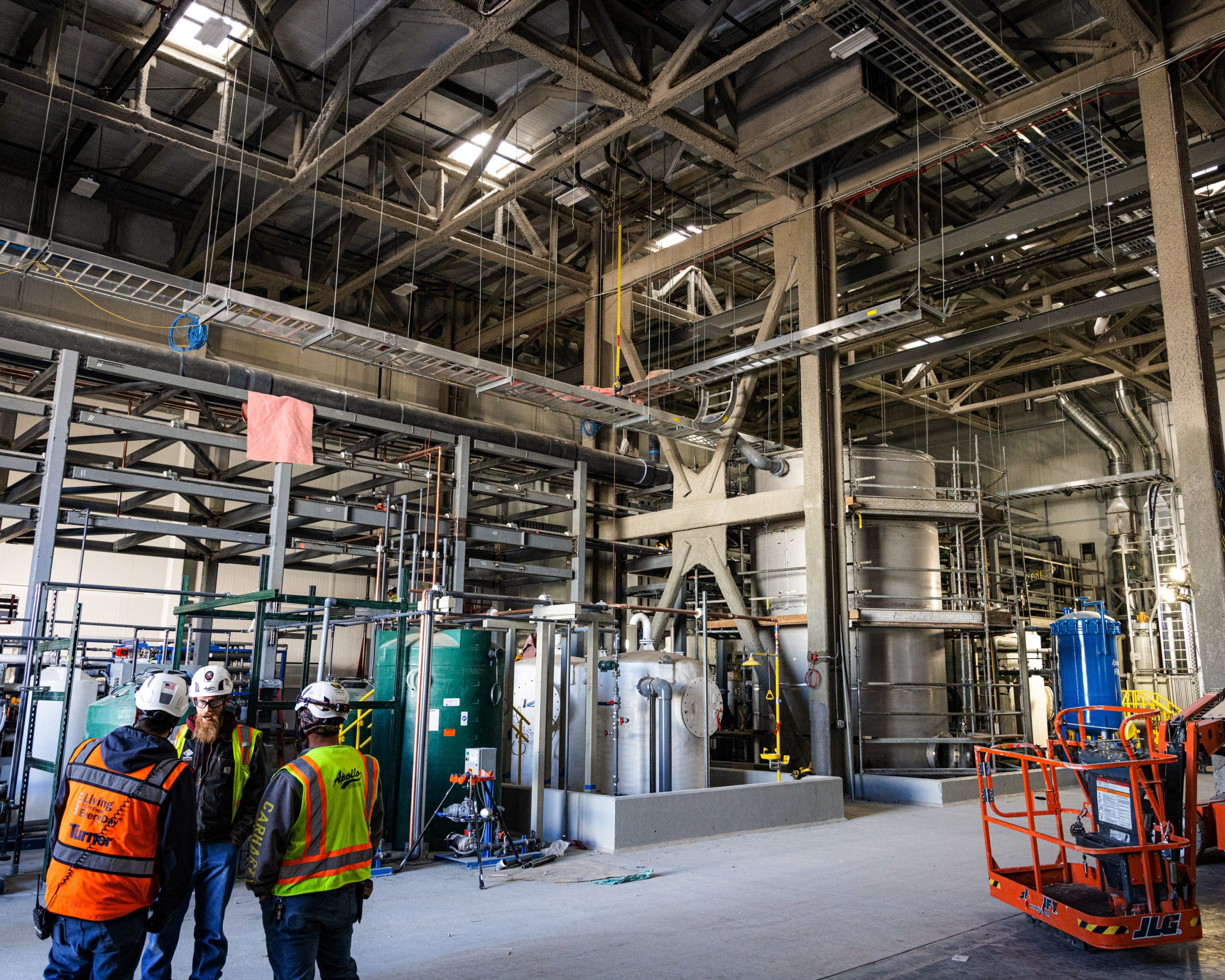 Redwood began construction on its battery materials campus in late 2021. The facility is expected to produce enough battery materials for 1 million EVs by 2025.
Redwood began construction on its battery materials campus in late 2021. The facility is expected to produce enough battery materials for 1 million EVs by 2025.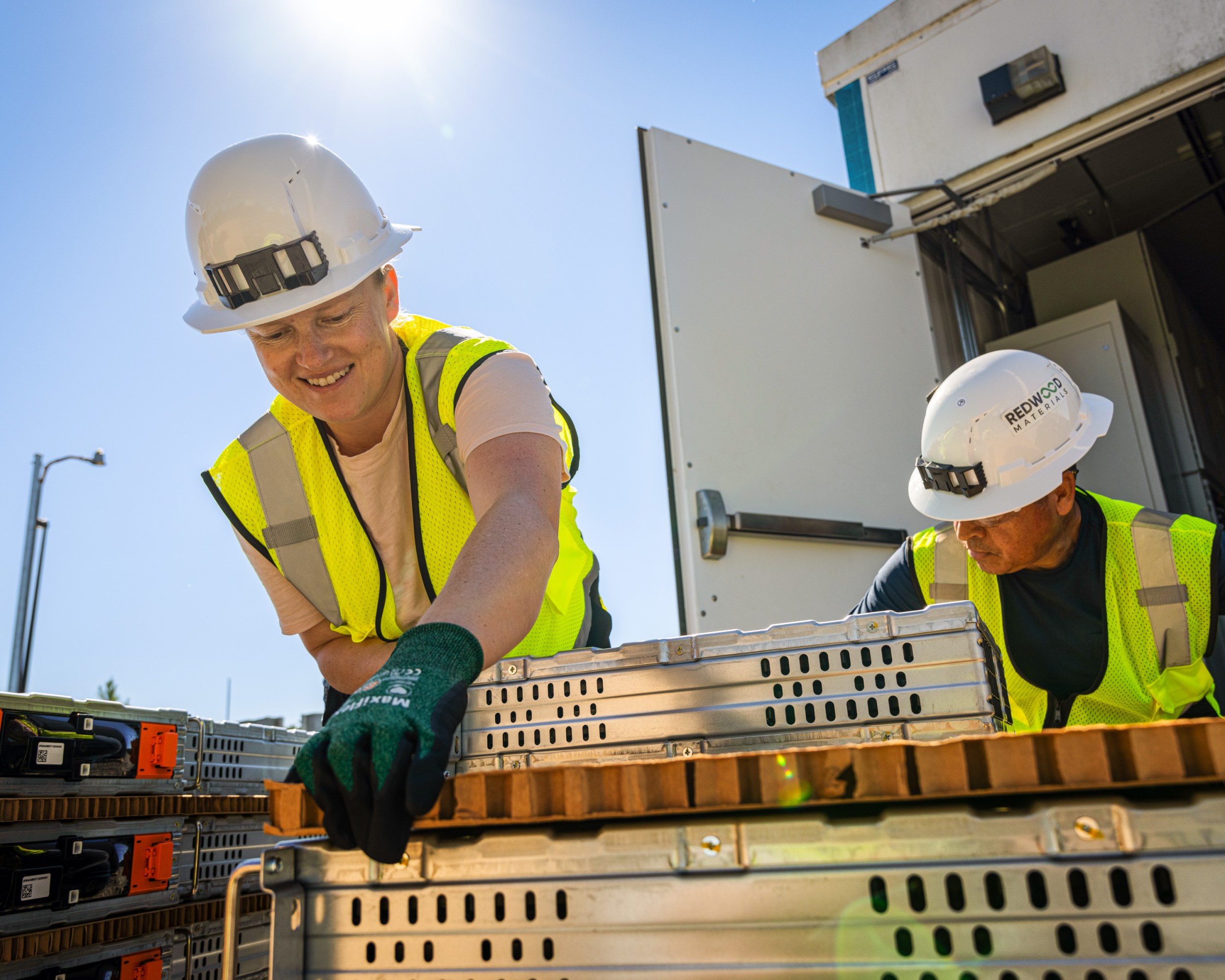 Large batteries, like these from an energy storage system, often need to be disassembled by hand before recycling.
Large batteries, like these from an energy storage system, often need to be disassembled by hand before recycling.Hand disassembly won't be ideal once the company starts taking in more materials, says Andy Hamilton, Redwood's VP of manufacturing. Eventually, Redwood hopes to automate more of this sorting process, though building automated systems that can deal with the variety of batteries the company takes in will likely be a challenge.
After sorting and disassembly, the batteries that still hold charge can be loaded onto a conveyor belt and carried up into one of four massive chambers for a process called calcination, where batteries are cooked at high temperatures to discharge them and remove solvents.
The material is then crushed into powder before it enters the hydrometallurgical process to separate individual elements.
Despite recent technical progress, recycling won't meet demand for battery materials anytime soon, says Alissa Kendall, an energy systems researcher at the University of California, Davis. Since demand is still rising exponentially, recycled batteries will at best account for about half the nickel and lithium supply by 2050.
However, as battery chemistries evolve, that percentage could change, as is happening already with cobalt. Batteries in EVs contain less cobalt today than they used to, and cell makers are continuously finding ways to use even less of the expensive metal. As a result, recycled cobalt could make up 85% of the supply needed by 2040, Kendall says.
Even if recycling can't fully supplant mining, cutting the need for more mines could reduce the social and environmental burden of producing new batteries. Many metals for batteries are mined in Africa, Asia, and Central and South America. Mining in these regions is often associated with human rights violations, including forced and child labor, as well as significant air and water pollution, according to the International Energy Agency.
Waiting for the battery tsunamiSome in the battery recycling business argue that the industry won't need much policy support, since the materials in batteries will be valuable enough to justify recycling them. But recent policy moves in the US could give recyclers like Redwood a further boost.
Since Redwood's manufacturing plant is in the US, the company could be eligible for production tax credits in the recently passed Inflation Reduction Act. The IRA will also drive demand for raw materials from outfits like Redwood. For cars to qualify for $7,500 tax credits, automakers will need to source their materials and manufacture their batteries in the US or with free-trade partners.
Critics have warned that industry may not be able to meet the timeline for these EV tax credits, especially for material sourcing, since it can take up to a decade to build new mines. A recycling facility, on the other hand, could be built more quickly, and some are pointing to recycling as a possible avenue for battery and car makers hoping to qualify for the credits.
Other governments are considering additional regulations to boost battery recycling. In Europe, recently proposed legislation includes provisions like requiring the original manufacturers of a battery to be responsible for it at its end of life. The EU has also considered requiring new batteries to have a certain fraction of recycled content.
Still, there could be a short-term shortage of batteries for recycling.The wave of old EV batteries expected in the coming decades is for now just a trickle, since only a small number of EVs are coming off the roads.
About half of what Redwood accepts these days has never been used in a product. This material ranges from assembled and charged batteries that failed quality checks to what's left of a sheet of metal when the desired pieces are cut out of it. Two semi trucks arrive at the Redwood facilities every day with manufacturing scrap from the Tesla/Panasonic Gigafactory.
Redwood has also made what Straubel calls a pragmatic" choice to include freshly mined metals in its products for now. The nickel and lithium in its first batch of cathode active material will only be about 30% from recycled sources-the remainder will come from mining.
The goal is to be ready when the battery tsunami arrives, says Straubel, and that means optimizing the recycling process now.
The path forwardWhile construction continued at the larger site, I walked through Redwood's headquarters in Carson City, where its scientists are still experimenting with the hydrometallurgy process.
Researchers have been working to use chemistry to recover metals from lithium-ion battery materials since the late 1990s. Companies in China have moved fastest, building a widespread network of recycling centers with government support.
But designing a system that can recover high levels of all the most expensive metals in batteries hasn't been easy. Lithium has proved especially difficult. Straubel says that of the four metals Redwood is most focused on, they can reach close to 100% recovery of cobalt, copper, and nickel. For lithium, the figure is about 80%.
Moving from the lab to real-world conditions can also make things even more complicated.
Mary Lou Lindstrom, Redwood's head of hydrometallurgy, showed me around the pilot lab space in Carson City, which resembled a craft beer operation, with stainless-steel equipment distributed around a cavernous room. Researchers were huddled around a computer and one of the large metal tanks.
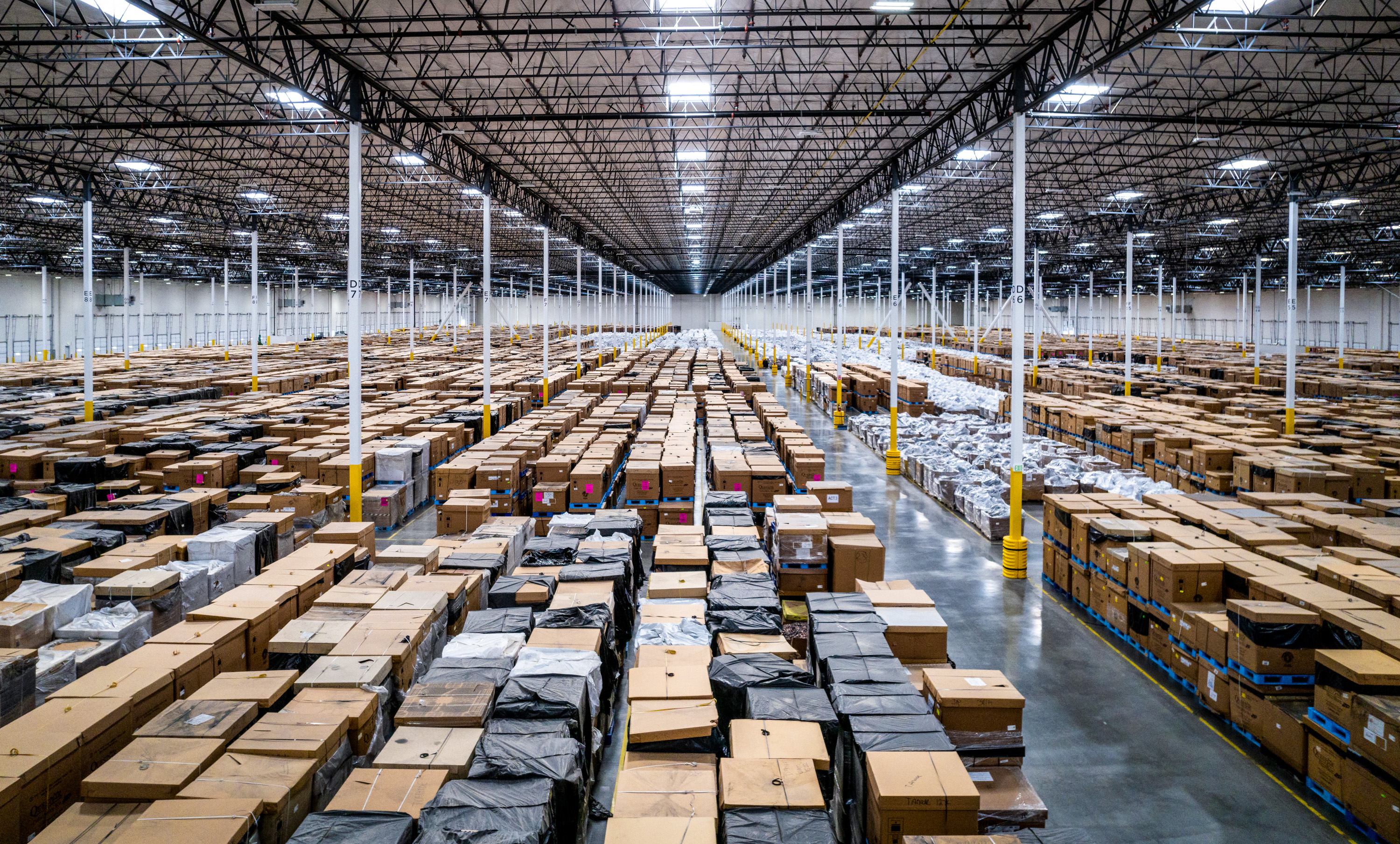 Used batteries and assorted manufacturing scrap from battery producers are stored in one of Redwood's massive warehouses as the company ramps up its recycling process.REDWOOD MATERIALS
Used batteries and assorted manufacturing scrap from battery producers are stored in one of Redwood's massive warehouses as the company ramps up its recycling process.REDWOOD MATERIALSLindstrom explained that they were working to produce the feedstock for the first batch of commercial copper foil; production would be starting up in the coming weeks. Delivery to Panasonic was scheduled to take place in December.
A technicality still stands in the way of Straubel's vision for a closed-loop battery ecosystem. So far, the copper Redwood was using to make foil came from industrial copper scrap, not batteries. The company hopes to use at least some battery material in the copper foil that eventually gets delivered to Panasonic for use in new cells. But industrial copper scrap is a more predictable material to work with.
This transition speaks to one major potential challenge for battery recyclers moving forward: they'll need to deal with unpredictable inputs while creating predictable, high-quality products. If battery recyclers are competing for material, this challenge will be magnified, since startups may have to accept less-ideal material to survive.
For now, Redwood can supplement its processes with manufacturing scrap, which is generally easier to work with, as well as mined material. But as volumes of old batteries grow and the supply of mined lithium stretches thin, challenges for recyclers will mount.
Increasingly, the solution to some of these sustainability problems is to electrify it and add a battery to it," Straubel says. I spent the majority of my career championing that and helping accelerate that."
At the same time," he says, it's a phenomenal amount of batteries."
EVs and other electrified transit options are becoming a practical choice. It's already cheaper in many parts of the world to own and drive an EV than a conventional car. And that's good news for the climate: in most cases, EVs will produce less in greenhouse-gas emissions over their lifetime than gas-powered vehicles.
Practical, economical battery recycling is key to fulfilling the promise of EVs. While the wave of dead batteries may be slow to build, the recycling industry is preparing now for what's coming, because executing this new vision will take decades of steady progress and innovation. Redwood's parking lot full of discarded batteries is just the start.